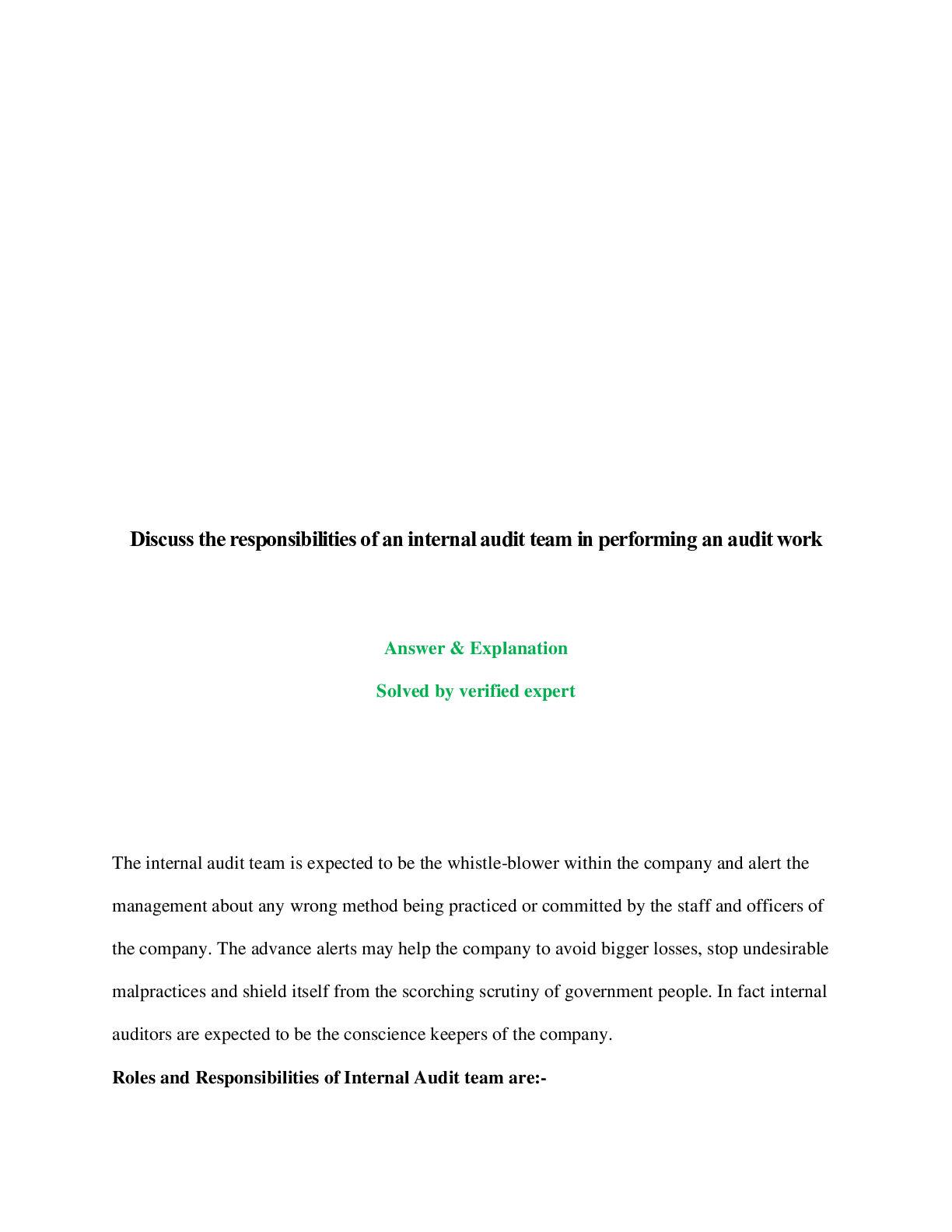*NURSING > Research Paper > NR 439 WEEK 5 ASSIGNMENT, READING RESEARCH LITERATURE COMPLETE SOLUTION (DOWNLOAD TO GET AN A) (All)
NR 439 WEEK 5 ASSIGNMENT, READING RESEARCH LITERATURE COMPLETE SOLUTION (DOWNLOAD TO GET AN A)
Document Content and Description Below
Chamberlain College of Nursing NR439: Evidence-Based Practice Reading Research Literature – Week 5 Type your answers to the following questions using complete sentences and correct grammar, spel... ling, and syntax. Click Save as and save the file with your last name and assignment, e.g.,NR439_Reading_Research_Literature_Smith. Submit by 11:59 pm MT Sunday at the end of Week 5. The guidelines and grading rubric for this assignment may be found on the assignment page. Title: RRL Name: The following questions pertain to: Velayutham, S. G., Chandra, S. R., Bharath, S., & Shankar, R. G. (2017). Quantitative balance and gait measurement in patients with frontotemporal dementia and Alzheimer diseases: A pilot study. Indian Journal of Psychological Medicine, 39(2), 176-182. doi:10.4103/0253- 7176.203132 http://proxy.chamberlain.edu:8080/login?url=http://search.ebscohost.com/login.aspx? direct=true&db=a9h&AN=122248443&site=eds-live&scope=site 1) What is the purpose of this research? The purpose of this research is to identify certain parameters in gait and balance to prevent severe and deadly falls in patients with Alzhiemers disease (AD) and Frontotemporal dementia FTD). 2) What is the research question (or questions)? This may be implicit or explicit. The research question for this study is, Can subclinical involvement of balance and gait parameters be identified in Alzhiemers disease and Frontotemporal dimentia to prevent severe to deadly falls in patients? 3) Give a complete description of the research design of this study. Patients with AD, FTD, and a control group were studied for dynamic balance, limits of stability, and gait. In the single tast, dynamic balance and limits of stability were measured on a posturographybased force platform. The platform moves so that it is not flat and the patients are off balance. Patients must adjust their “base of support” (BOS) and the reaction time and ability to readjust their BOS is recorded. This dyname balance test ran for 20 seconds. The limits of stability test ran for 300 second to test how well patients could return to their BOs after moving off-balance in “eight different directions, namely, (1) forward (F), (2) backward, (3) right, (4) left, (5) forward right, (6) forward left, (7) backward right, and (8) backward left.” In the dual tast, patients had to complete a cognitive process (basic subtraction) while dling the dynamaic balance tests. their The patients wore a harness to avoid injury during these tests. NR439_W5_Reading_Research_Literature_Form.docx 5/4/17 jw 1 This study source was downloaded by 100000831988016 from CourseHero.com on 04-18-2022 15:46:59 GMT -05:00 https://www.coursehero.com/file/23624012/week-5-NR-439-RRL-assignment-complete/ Chamberlain College of Nursing NR439: Evidence-Based Practice For the gait assessement, patients walked for two mintues on a “sensor-based treadmill” at a regular walking pace. The dual task had the patients repeating the same walk and counting backwards for the cognitive part. 4) What is the population (sample) for this study. There were 24 males between the ages of 50-70 used in this study. They were separated into three groups of 8: “probably FTD diagnosis (by FTD diagnoses)”, “probable AD diagnoses” (“by ADs association criteria”), and a control group of healthy volunteers. The participants could have no “orthopedic, visual deficit, other neurological conditions, and cardiovascular ailments” that could further affect the results. 5) Was the sample approach adequate for the research design that was selected and explain why. Twenty-four participants seems like a low number, and having only males in this study needs to be made clear, too. Male cognitive ability at this age range could differ from female cognitive ability in the same age range, even for patients with AD for FTD. This study could have been repeated with women, too, to have the results compared and further widen the affect of the study. 6) Describe the data collection procedure. The data were collected for each person’s test based on their reactions, single and dual, then combined as a group response. 7) How were the data analyzed after collection? Each test results were compared to the three different groups to determine if a certain group had certain identifiable traits in the tests. Measurements for each groups reaction to the individual tests, as well as the individual components of each test, were analyzed separately to show the differentiation between AD and FTD responses to the control group. 8) Discuss the limitations found in the study. FTD patients seemed to fare the worse in these tests as far as dynamic balance, yet all groups did poorly in the dual tests, which could mean that dual tests are not as necessary for AD and FTD groups; single physical tests could provide just as strong results. The researchers also note that they need to conduct this study with a larger population for more accurate results. 9) Discuss the authors' conclusions. Do you feel these conclusions are based on the data that they collected? The authors conclude that gait and balance in FTD patients, especially, separates them from the AD and control groups. The authors also found that all 3 groups had trouble with the dual test, and that cognitive thought does affect any person’s walking and balance ability. It is clear that these conclusions are based on the collected data. 10) How does this advance knowledge in the field? NR439_W5_Reading_Research_Literature_Form.docx 5/4/17 jw 2 This study source was downloaded by 100000831988016 from CourseHero.com on 04-18-2022 15:46:59 GMT -05:00 https://www.coursehero.com/file/23624012/week-5-NR-439-RRL-assignment-complete/ Chamberlain College of Nursing NR439: Evidence-Based Practice Early identification of FTD, distinguishing it from AD could be possible if the patient has more trouble with stride length and step balance. With earlier, correct diagnosis, patients could receive appropriate treatment before there is too much degeneration of their gait and balance. [Show More]
Last updated: 1 year ago
Preview 1 out of 6 pages
Instant download
.png)
Instant download
Reviews( 0 )
Document information
Connected school, study & course
About the document
Uploaded On
Apr 18, 2022
Number of pages
6
Written in
Additional information
This document has been written for:
Uploaded
Apr 18, 2022
Downloads
0
Views
86




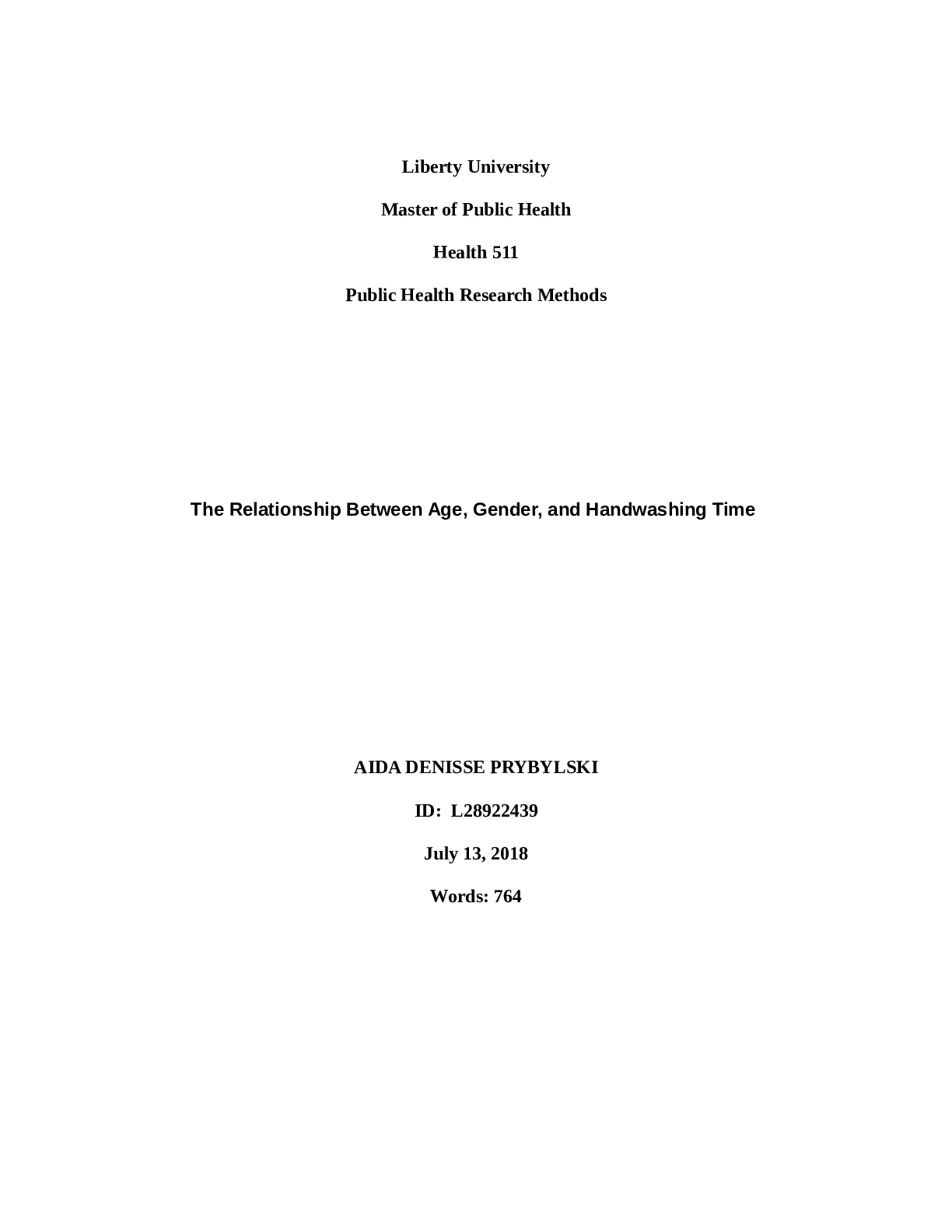





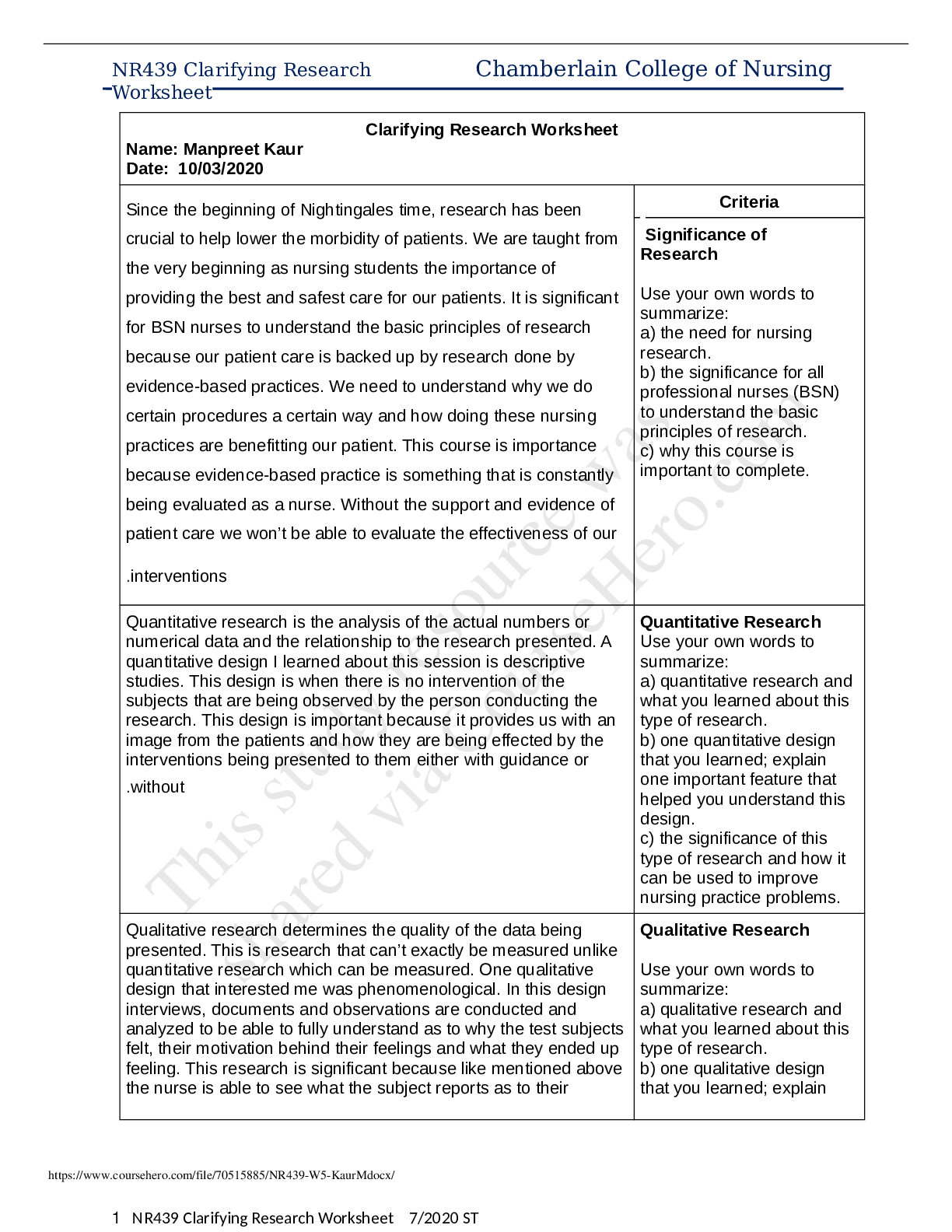




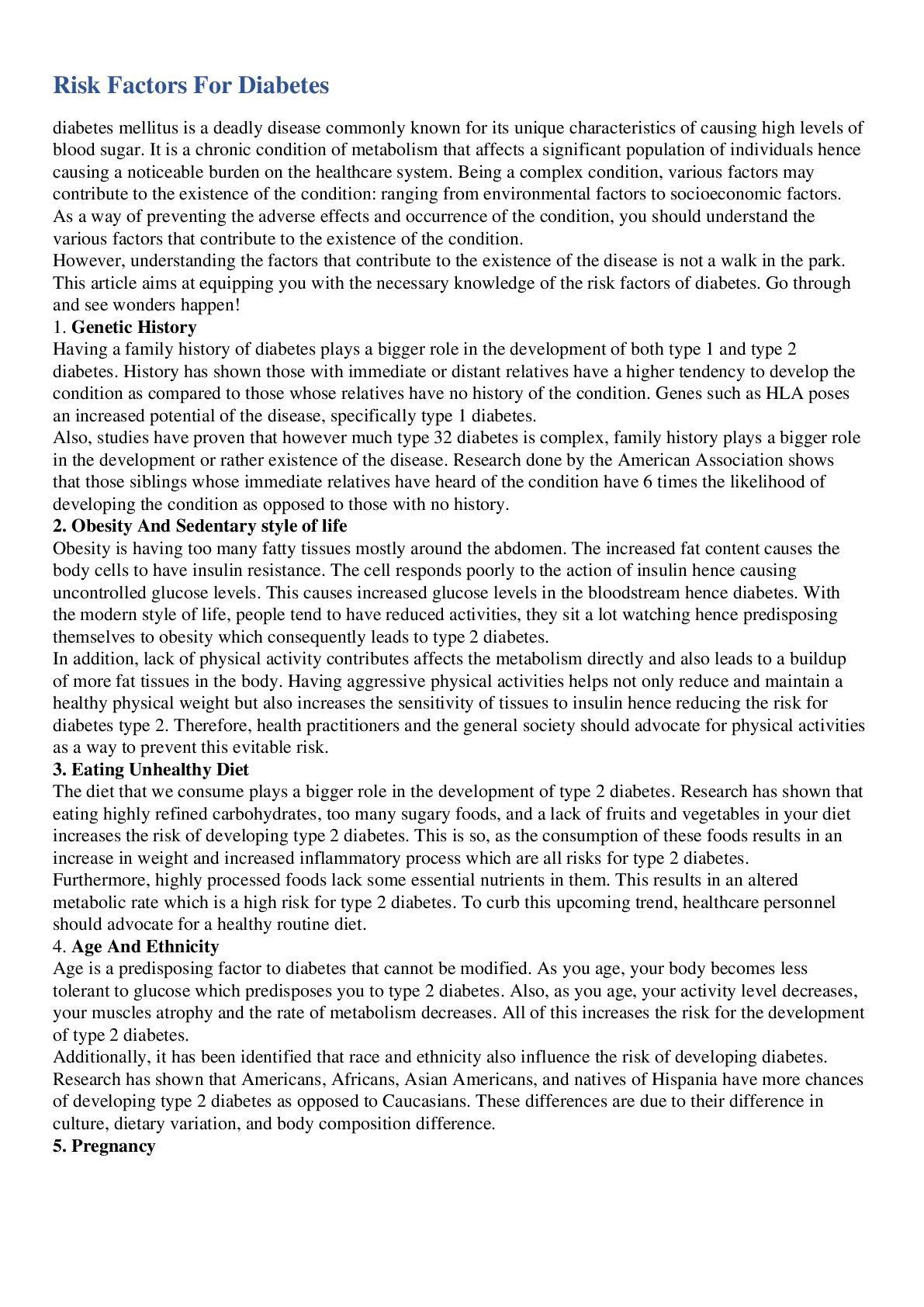

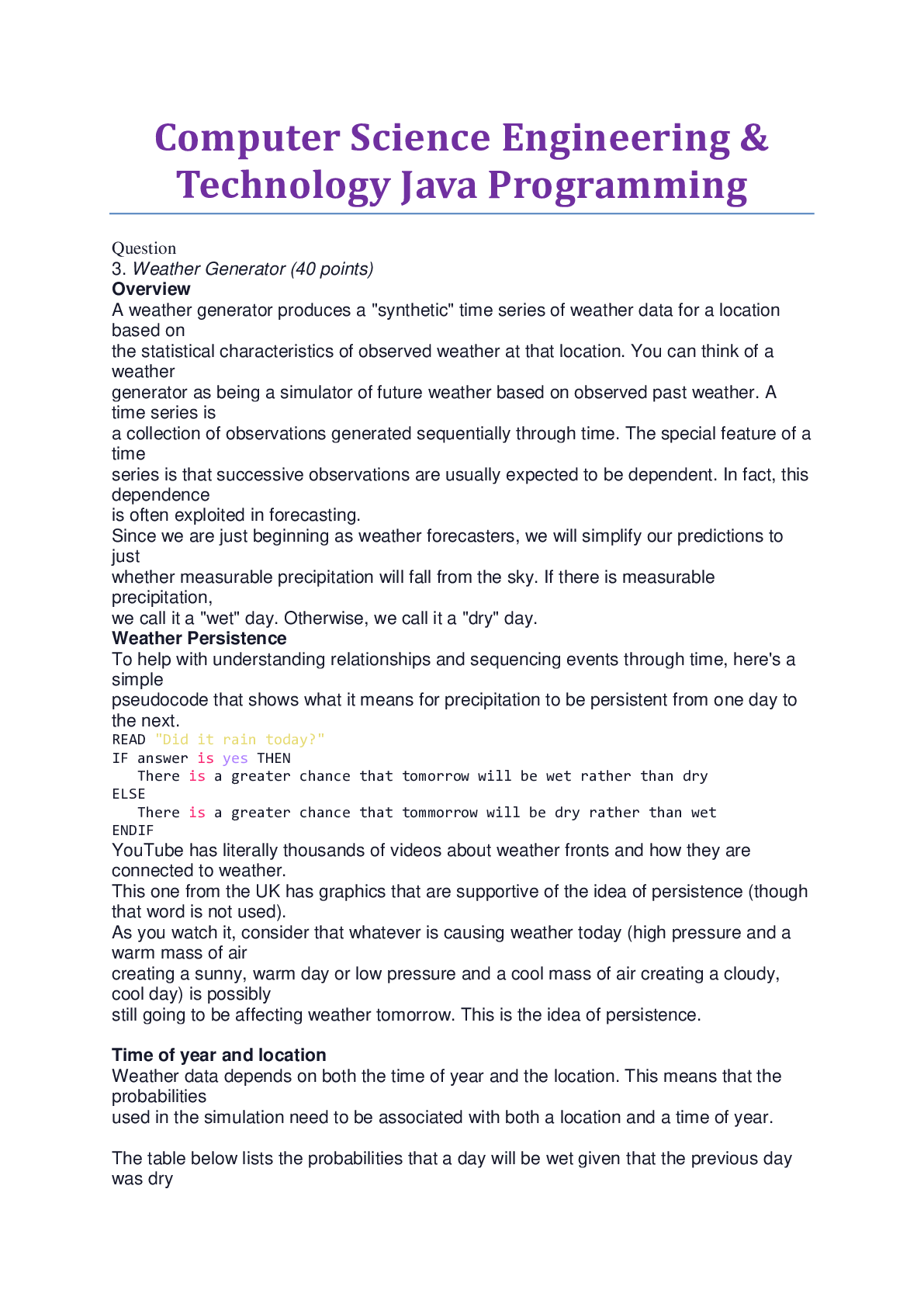

Interdisciplinary Paper.png)





